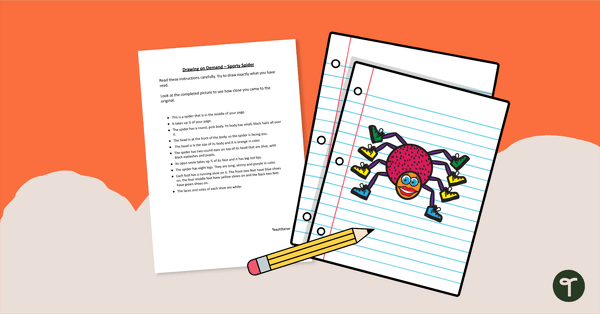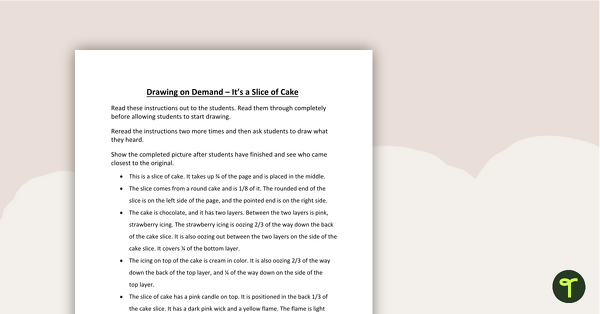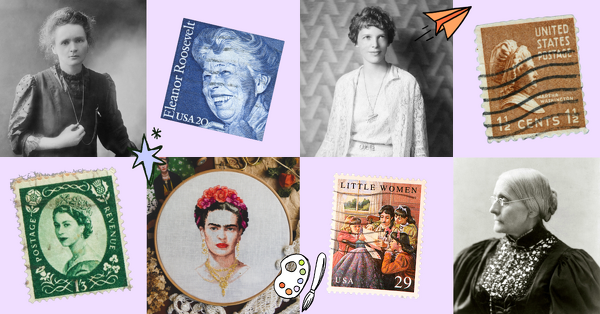Every teacher who has spelled out clear instructions only to have hands raise and the inevitable “uh, what do we do now?” knows that learning listening and speaking skills are both crucial in the early years of elementary school. Listening, speaking, reading, and writing all come together as children develop their relationship with the English language and their communication skills.
But how do you teach vitallistening for learning skills? You can’t exactly pry open those little ears! And for that matter, how do you teach your students when to speak up and how to communicate their needs properly? Here are some great tips to help you help your students!
Download a pre-designedListening Comprehension Skills PowerPointfor your classroom!
How to Teach Listening and Speaking
Role Model Good Speaking and Listening Skills
As teachers, we are our students’ role models, and it’s up to us to lead by example! When your students are speaking, make eye contact, and let them know you’re listening rather than letting your mind wander to the piles of paperwork on your desk. Don’t interrupt your students (unless necessary!), and encourage your students to speak up in class rather than you talking “at” them.
Set Speaking and Listening Goals
Get your students off on the right track by collaborating with them to set some Speaking and Listening Goals. With goals specifically tailored to lower, middle, and upper grades, your students will have clear direction on the skills they need to develop on their journey to becoming better listeners and speakers. Once students have reached their goals, they can proudly display‘I Can’ Statements – Speaking and Listeningin their take-home folders.
Hand signals are a great way for students to communicate without having to speak up and interrupt a lesson when they need help or need to use the bathroom. How can this help students learn listening and speaking skills? Simple. Knowing when to stay silent is as vital as knowing when to use your voice!
Having hand sign posters prominently displayedwill help your students remember which sign means what.
Play Listening Games
Games that require students to listen, wait, and then react, or listen and make a decision are particularly good at targeting not only listening but processing skills too.
These games can easily be incorporated into your morning routine!
1. Hurrah-Boo!
Ask your students to listen intently to statements you’re about to make.
If it’s a nice statement, they say hurrah! If it’s not so nice, they say boo.
- “Everyone gets an ice cream!” – “HURRAH!”
- “Lunchtime is canceled.” – “BOO!”
2. I Say – Go!
- Akin to Simon Says, this game requires students to listen carefully before completing a task.
- The catch with this listening game is that they have to wait until you say “Go!” before they can carry out the instruction.
- To increase the difficulty, leave a longer gap between the instruction and saying go!
Download “Snowman Says,”a cool twist on Simon Says for your classroom!
3. The Telephone Game
This timeless classic needs little explanation.
- Students sit in a circle and pass around a message by whispering in their neighbor’s ear.
- When the final student is reached, they stand up and repeat the message they heard.
- Compare it to the start and see how well the message got relayed from person to person!
4. Grocery Store
This is a great game to challenge your students’ listening and memory skills.
- One child starts off the shopping list by saying “I went to the grocery store and bought…” something.
- The next child continues by saying the previous item and adding their own item!
- Continue around the class working through the alphabet and adding items to the list.
For older students, make the items topic-specific, such as items you’ll find only in the rainforest or animals that are herbivores?
5. Thumbs Up, Thumbs Down
Read a list of true or false statements. Students have to listen carefully and decide on the validity of the statement. If it’s true, they give a thumbs up! If it’s false, a thumbs down.
- “My hair is blue.” = thumbs down.
- “Ms. Stuart is the best teacher in the world!” = thumbs up (we can only hope!).
This game can be altered to suit older students. For example, read out true and false statements about a curriculum topic you have been working on.
Scaffold Note Taking
Part of learning listening skills is being able to transfer what is heard into comprehension of a specific topic. Scaffold your students’ note-taking with graphic organizers, Venn diagrams, and similar methods for chunking material to enhance their encoding and processing of information.
Choose from dozens ofprintable graphic organizers, created by teachers.
Mix Visuals With Listening
Play theIs It True? Listening Activitywith your students. Students listen to the description read by the teacher while viewing an image. They decide whether the information is accurate or not. This resource provides great exposure to descriptive vocabulary, and you can adjust the vocabulary to suit your students’ abilities.
Incorporate Directed Drawing
Listening and art can go hand in hand, too, and studies have shown that drawing can be asuperior form of note-taking for kids— helping with memory retention.
Read the description out to your students several times. They need to listen very carefully as they are required to draw what they hear.

teaching resourceDirected Drawing Activity - How to Draw a SpiderTeach students how to draw a spider with a fun directed drawing activity for elementary students. 
teaching resourceDirected Drawing - How to Draw a Piece of CakeUse this directed drawing activity of a piece of cake to help students develop their listening skills in the classroom. 
teaching resourceDirected Drawing for Kids - How to Draw Corn on the CobUse this directed drawing activity with your students to teach them how to draw corn on the cob and enhance classroom listening. |
Use the picture on the second page to see how close your students came to drawing the picture described.
Write a Speech
Sometimes students have plenty of important thoughts in their heads, but when it comes to verbalizing them, things get tricky. Have students practice their speaking skills by using ourWriting a Speech Poster
Encourage students to think outside the box! How about giving a speech on their favorite animal or a great movie they’ve seen?
State Your Opinion
If your students struggle to express their point of view, this effective lesson on investigating their point of view will get them on the right track.
Watch a video retelling the storyI Wanna Iguana by Karen Kaufman Orloff.
看后,让学生分享他们的观点of view about some everyday issues that they can relate to. Encouraging the students to explain and justify their reasoning to the class is a great way to explore opinion and verbal expression of points of view.
Speaking in Rhyme
Sometimes the problem isn’t the processing of speech, it’s the nerves that come along with it.
Use theseNutty Nursery Rhymes Speaking and Listening Activitycards as a fun, open-ended speaking activity to build confidence. The emphasis is on being playful with language as students explore rhyming words.
The cards are designed for use in small groups. Print and laminate several sets of the cards so that each group can work on the same rhyme simultaneously.
Study the following rhymes with these cards:
- Humpty Dumpty
- Little Miss Muffet
- Hickory Dickory Dock
- Little Bo Peep
- It’s Raining, It’s Pouring
- Twinkle, Twinkle
- Five Little Ducks
- Baa, Baa, Black Sheep.
Color Me Carefully Collaboration
ThisColor Me Carefully游戏是适合带the skills of speaking and listening together. Your students can play this game in pairs with the players separated by a barrier. There is a speaker and a listener. Prior to beginning the game, the speaker colors their sheet.
During the game, the speaker gives precise instructions to the listener who just listens carefully and colors accordingly. The goal is for the listener to produce work that is close to being identical to that of the speaker. This is a good lesson in communication and teamwork.
See dozens oflistening skills resources created by teachersfrom around the country!
Banner image via Shutterstock/Oksana Kuzmina





